Alice Stopford Green and the origins of the African Society
Published in 20th-century / Contemporary History, Features, Issue 4 (Jul/Aug 2006), Volume 14‘Whether I shall come out of this like I came out of what is associated with thinking proper I don’t know . . . Ah this work here, the stench, the washing, the enemas, the bed pans, the blood is my world. Not London Society, politics & that gateway into which I so strangely wandered—into which I don’t care a hairpin if I never wander again . . .’
[NLI MS 134]
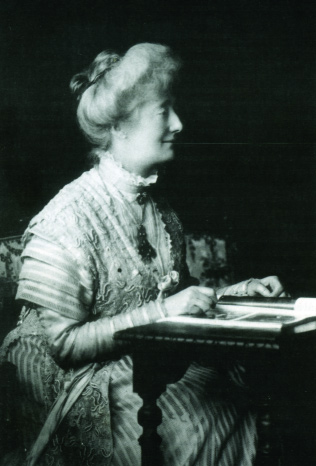
Alice Stopford Green-after her husband’s death in 1883, she established herself as a historian in her own right. (F. J. Bigger Papers, City Library, Belfast)
A few weeks after these lines were scribbled, in April 1900, newspapers throughout the British Empire reported the death of the author, Mary Kingsley. Her sudden demise from enteric fever, contracted while working as a volunteer nurse in a disease-stricken prison camp for Boer prisoners-of-war, heralded a new age of womanhood that was public not private, socially engaged and self-sacrificial. A century on, Mary Kingsley continues to inspire fascination as the most unlikely personality in the long list of nineteenth-century writers on the colonial encounter in Africa.
The enduring image of the petite Victorian lady paddling up mosquito-infested rivers, trekking through dense forest and climbing mountains dressed in delicate laced collars upset the hyper-masculine stereotypes of West African exploration narratives. Her two books, Travels in West Africa and West African Studies, did as much to disrupt perceptions of Africa as any work of her time. Kingsley’s candid, witty and self-effacing style, describing her confrontation with crocodiles and hippopotami, her controversial defence of cannibalism and search for ‘fish and fetish’, were stories told long after her death. Wherever in Britain she was invited to lecture, her presence guaranteed packed halls, with a public eager for entertainment and information. More significantly, in terms of the colonial destiny of Africa, her work captured the political imagination of a generation of ambitious liberal imperialists. Among her correspondents she counted the colonial secretary, Joseph Chamberlain, the governor of the Gold Coast, Sir Mathew Nathan (under-secretary in Ireland in 1916), the publisher George Macmillan and the Liverpool trader John Holt. In her brief association with West Africa she built up a formidable network of people interested in improving colonial relations.
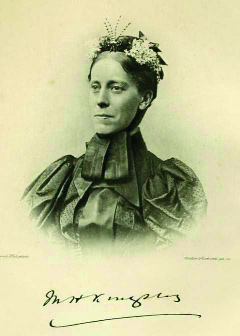
Mary Kingsley-a century on she continues to inspire fascination as the most unlikely personality in the long list of nineteenth-century writers on the colonial encounter in Africa. (Stephen Gwynn)
Alice Stopford Green
The recipient of Kingsley’s letter quoted above was the historian Alice Stopford Green. Green was a key figure in Kingsley’s ascendancy into the high political and social circles of new liberalism. The surviving letters from Kingsley to Green reveal a special intimacy between the two women. Behind the general scheme of social gossip, Kingsley makes veiled references to love for a nameless man and to her own struggle with a system from which women were largely excluded. When the two were first introduced, sometime in the mid-1890s, Green was already a well-established figure in liberal, academic and literary circles. Born Alice Sophia Amelia Stopford in Kells in 1847, she was the seventh child of Archdeacon Edward Stopford. From an early age she had access to her father’s library and began to teach herself Greek, German and metaphysics. At about the age of sixteen she was attacked by an eye ailment, rendering her temporarily blind. In 1873 her family moved to Dublin and there, hungry for knowledge, she started to attend lectures in physics at the College of Sciences. After her father’s death she moved with her mother and sisters to London, where she was noticed by an emerging Oxford historian, John Richard Green. In 1877 they were married.
J. R. Green’s A short history of the English people, published four years earlier, had quickly established itself as the most popular history since Thomas Macaulay’s History of England from the accession of James the Second. During their six years of marriage Alice worked as her husband’s research assistant, collaborated on A short geography of the British islands (1879) and learnt the skills and techniques of the professional historian. With A short history Green pioneered a new historiographical approach engaged with social and cultural aspects—less to do with kings and wars and more to do with ordinary people and economic and intellectual development. Through their partnership Alice gained an exceptional understanding of constitutional issues and an insight into the vital relevance of history to the creation of national identity. Besides her intellectual emergence as a historian, her marriage connected her to a network of liberal intellectuals and a cabal of mainly Oxford historians, including Stubbs, Creighton, Morley, Lecky, Bryce and Freeman.
After her husband’s death in 1883, Mrs J. R. Green, as she was generally known, established herself as a historian in her own right, thanks to a generous annual income from A short history. Her early works—a life of Henry II and a long two-volume study of Town life in the fifteenth century—confirmed her as well able to compete in a male-dominated discipline. But history was not her only world. She also expressed herself in public on education matters, the school curriculum and women’s issues. Along with her friend Beatrice Webb (née Potter) she was one of the signatories of An appeal against female suffrage (1889) and advanced an alternative role for women in public affairs. Her argument against suffrage was premised on the idea that women would never compete against men in a patriarchal political system. If women wanted power, she argued, they needed to find ways of imposing alternative circuits of influence. It was this philosophy that underwrote her friendship with Kingsley, and one that was most directly expressed in the two main achievements of her life: the foundation of the African Society and her contribution to Irish independence and the writing of a history for a new Ireland.
The African Society
On hearing of Kingsley’s death, Green decided to make a trip to Africa to investigate the circumstances of her end and to visit the prison camp on St Helena where Boer prisoners-of-war were being held. In October 1900, returning to England aboard a steamship, she wrote a chatty letter to John Holt:
‘I have been steaming past your old haunts and seeing a bit of West Africa . . . I thought much of Miss Kingsley in passing the coast . . . I shall hear when I get back what the prospects of the memorial are. I have a long letter from Dr Blyden, urging the study of laws & customs and sending names of those who would help. I am certain if this Empire is to be held together at all that Englishmen will have to think more of knowledge v intelligence, & trust less to the argument.’
Kingsley’s sudden death had motivated several of her friends to consider how her memory could be honoured and the momentum of her work on Africa continued. It was Mrs Green who would take the initiative. Her reference to ‘knowledge v intelligence’ was a perceptive observation about how the basic dynamic of information was altering fundamental relationships of imperial power. Increasingly, knowledge was the instrument of legitimisation and control, and its ordering, dissemination and epistemology were vital to the maintenance and management of colonial affairs. Like Kingsley, Green believed that the chain of destructive encounters defining the European presence in Africa resulted from mutual misunderstandings between European views of Africa and African views of Europe. A veil of ignorance had been drawn over European expansion. Demeaning images of Africa had endorsed the aggressive process of justification. European perceptions were massively distorted. The public were fed on stereotypical images of the ‘Dark Continent’ promoted by the yellow press. The challenge, as Green understood it, was to promote, catalyse and stimulate a new understanding and representation of Africa, and it was with this intention that the African Society was constituted ‘for the purpose of investigating the usages, institutions, customs, religions, antiquities, history, and languages of the native races of Africa; of facilitating the commercial and industrial development of the continent in the manner best fitted to secure the welfare of its inhabitants; and as a central institution in England for the study of African subjects’.
The tone, in many respects, was deeply imperial, and part of the process that essentialised both the continent and the people and produced Africa’s invention in Western eyes. Over the next decade, however, a far more radical dynamic was born through its organisation—one that would profoundly influence the historical emergence of national politics in both Ireland and Africa. On 27 July 1901 the African Society held its inaugural meeting at the theatre of the United Services Institute in Whitehall, with a general committee composed of an impressive list of influential administrators, businessmen, academics and politicians. Among those prepared to lend their names to the cause were the future prime minister Herbert Asquith; the Egyptian proconsul, Lord Cromer; the governor of Lagos, Sir William MacGregor; the medical research scientist Patrick Manson; and the West African trader Sir George Goldie. The African historian J. D. Fage has analysed the membership list and has concluded that it gathered members from various professions. Equally radical for the time was the inclusion of African voices and a visible body of women on the committee.
The launch of the society coincided with major cultural shifts among African and Afro-American intellectuals. The first Pan-African Congress, held in London in July 1900, was indicative of a move among people of African descent to organise and exchange ideas and information universally.
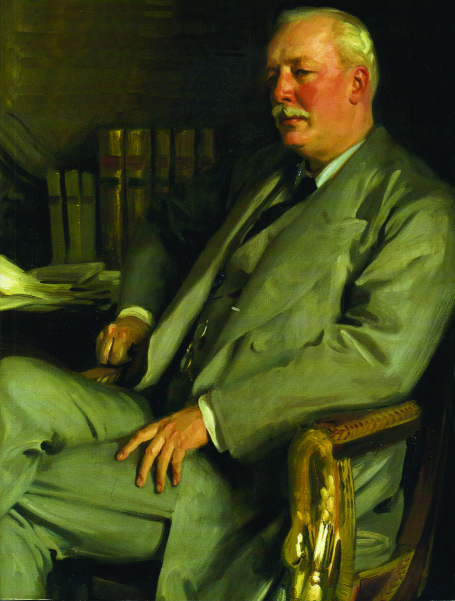
Egyptian proconsul Lord Cromer-among those prepared to lend their names on 27 July 1901 to the founding of the African Society. (National Portrait Gallery)
The publication of Booker Washington’s Up from slavery (1901) and W. E. B. Du Bois’s The souls of Black folk (1903) took the movement for the recognition of African difference into another realm of ethnic self-discovery. Du Bois articulated the curse of ‘double consciousness’ and his struggle as both a black and an American to reconcile his duality—‘two souls, two thoughts, two unreconciled strivings; two warring ideals in one dark body’. It was a view that was adapted to the parlance of oppressed colonial people globally. As far-reaching as her efforts to transcend embedded racial prejudices within imperial power structures, Green fought for the visibility of women in the running of the society. By 1906, 39 women were members, at a time when the Royal Geographical Society was still exclusively male.
Edited the Journal of the African Society
From the outset, however, Green encountered much opposition in implementing her vision of how the society should operate. Her hope was to encourage a role similar to that of the Royal Asiatic Society, and to stimulate research and the gathering of information on Africa. This was not a shared view. Opposing opinions on the committee wanted a more clubbable approach conducive to business deals and commercial exchange. In the end both views were embraced and Green found her niche in editing the Journal of the African Society, which she did until 1906. A social dynamic was satisfied through annual dinners, which raised the profile of the society and attracted several distinguished guest speakers. Through her work as editor Green was able to nurture a new generation of writers on Africa, among them the Irish author Stephen Gwynn, who would later publish the first biography of Mary Kingsley.
On another level, Green’s intense study of African affairs gave her access to sensitive and undisclosed information about colonial relations, which made her reflect not merely on the fate of Africa but, more provocatively, on Ireland’s constitutional attachment to England. She was privy to the considerable levels of violence underlying expansionist policy, and ruminated in private on how historical narrative was constructed and controlled. In 1903 her African interests took a radical turn. She discreetly supported the launch of the West African Mail, under the editorship of the crusading journalist E. D. Morel, as she allied herself to emerging socialist elements in British politics.
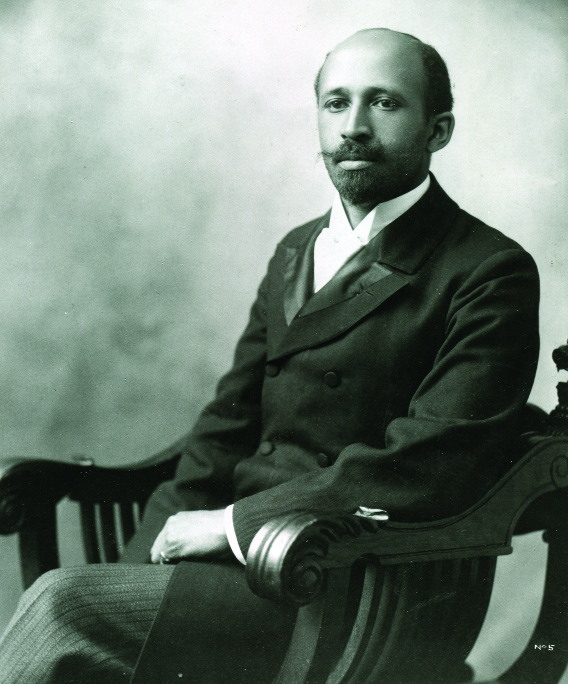
W. E. B. Du Bois-his The souls of black folk (1903) took the movement for the recognition of African difference into another realm of ethnic self-discovery. (Amherst, University of Massachusetts)
This turn occurred as her own views on Ireland and Irish history were evolving, and this merging of African and Irish interests is quite probably discernible in the encoding of a Gaelic letter ‘T’ on the title page of the publication. The following year she was visible in the setting up of the Congo Reform Association and remained an active member until its dissolution in 1913.
Developing Irish nationalist sympathies
Although Green had sustained an interest in Ireland since her childhood, it was in the 1890s that her sympathies shifted towards a more nationalist reading of the Irish past. As R. B. McDowell has noted in his biography, this was partly influenced by her close friendship with the barrister and author John Francis Taylor. The founding of the Gaelic League by Douglas Hyde and Eoin MacNeill in 1893 regenerated impetus in the movement for Irish learning. Green steeped herself in the new wave of scholarship and philology and grew close to its main advocates, Kuno Meyer and the Belfast antiquarian Francis Joseph Bigger. Her commitment to the language cause was asserted in 1904 when she financed a journey to the United States to raise funds for translating old Irish manuscripts. This sympathy for advanced or ‘high’ nationalism in Ireland, fused with her support for English radicalism and her growing disgust with expansionist policy and imperial jingoism, proved a powerful combination. Fired by a desire to contribute towards cultural nationalism, Green set about the task of constructing a narrative, rooted in new Irish scholarship, that would dispel the mythologies of the accepted account of Irish history and replace it with a more nationally motivated version of what actually happened.
In 1908 she began her assault on the historical establishment with the publication of The making of Ireland and its undoing 1200–1600, a study concentrating on commercial, industrial and educational aspects of the late medieval and early modern period. Her approach was deliberately provocative, often revolutionary, and caused various reactionary elements within the Irish academy to erupt with a sense of confused indignation. In the subsequent wave of controversy, she made reference to a tradition of conspiracy in the writing of Irish history that had deliberately sought to distort the past and misrepresent the Irish as the barbaric ‘other’. In a speech to the Irish Club in December 1908 she made reference to
‘a famous satire which tells of a land where the Universities were colleges of unreason, where the chief business was the study of hypothetics, and where societies were founded for the suppression of useful knowledge and the complete obliteration of the past. The writer called that “Nowhere”. He did not know that it was Ireland.’
Her words provoked reaction. So outraged were the committee of the Royal Dublin Society that they refused to place her book upon their library shelves. The most concerted response came from Robert Dunlop in the Quarterly Review and goaded Green into a long reply, in which she differentiated between ‘original inquiry’ and the maintenance of ‘narrative traditions’ intended to support the structures of power. In 1911 she published a short and more accessible version of Irish history entitled Irish nationality, intended for mass circulation among ordinary Irish women and men.
History and power
The polemic resulting from her historical approach prompted her to reflect on the relationship between history and power. The controversy has considerable parallels with the ‘revisionist debate’ of recent times and anticipated contemporary post-colonial theories on the use of history as an instrument of oppression. Over the next eight years Green remained in the frontline of various public polemics. In one famous incident she attacked a school history, co-authored by Rudyard Kipling, for how it constructed Irish difference. In her public discourse she dismissed outdated methodologies, referred to Froude as a fraud, questioned the dominant position of the archive and lambasted the administration for failing to protect the heritage of Ireland—evident in her vehement attack on the desire of the viceroy, Lord Aberdeen, to adopt the title ‘Marquis of Tara’. Her own methodological approach cleverly subverted ‘professional’ standards as she plucked evidence from various disciplines and dismissed the idea that history was ever capable of objectivity. It says something of her stature that in 1911 one reviewer described her as ‘the most important Irish writer of the day’.
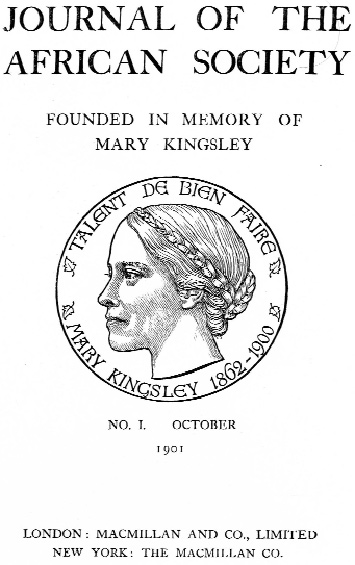
Green found her niche editing the Journal of the African Society, which she did until 1906.
As the Home Rule crisis deepened, Green increasingly pinned her colours to the mast of the separatists, joined Cumann na mBan and condemned Carsonism and all it stood for. Her byline appeared with increasing frequency in the advanced nationalist newspapers, and her histories were frequently referenced by other intellectuals, notably James Connolly.
Her belief in the potential of history as an active dynamic reached its apogee in the spring of 1914, when her house overlooking the Thames near Westminster became the scene of a conversation between two senior British officials, both with strong attachments to Africa: Roger Casement and Erskine Childers. If Casement and Childers together planned the Howth gunrunning, it was Green who held the purse strings. She served as treasurer and advanced an undisclosed amount of money to pay for the guns. Perhaps the most unsettling paradox of the plan is to ponder whether her financial contribution was forthcoming from the royalties from A short history. In April 1916, branded a ‘red hot revolutionist’ by British intelligence files, Green’s strenuous efforts to save her close friend Roger Casement from the gallows failed, and soon afterwards she returned to Ireland to support the painful path to partition.
In the years after 1916 she wrote a series of pamphlets encouraging independence and opposing political division. She was a strong supporter of Michael Collins, and her long-serving secretary, Maire Comerford, later remembered how his bicycle was often parked in the hallway of her house in St Stephen’s Green. After the signing of the Anglo-Irish Treaty she was a member of the pro-Treaty women’s organisation Cumann na Saoirse and a founding member of Cumann na nGaedheal. As one of the four women elected to the first senate, she busied herself in altruistic and educational matters and remained active in encouraging and promoting an Irish understanding of the past, upholding the ideal of a common history in the intellectual formation of a people and the process of post-revolutionary reconciliation, a view captured in the dedication accompanying a precious casket she presented to the senate in 1924, where she commented:
‘No real history of Ireland has yet been written. When the true story is finally worked out—one not wholly occupied with the many and insatiable plunderers—it will give us a noble and reconciling vision of Irish nationality. Silence and neglect will no longer hide the fame of honourable men [and women] . . .’
Silence and neglect
In plotting her path in both Irish and African historiography, Alice Green’s presence remains disruptive and contradictory. How ironic it is that she would herself become a victim of the process of ‘silence and neglect’ that she had so persistently railed against in her writings. In Britain she is most often remembered as the wife of J. R. Green or derisively dismissed as an ‘unhistorical’ historian. Despite her influence in formulating a new historiography for Ireland, her name has been noticeably absent in the general flow of books on the intellectual roots of cultural nationalism and the 1916 rebellion.
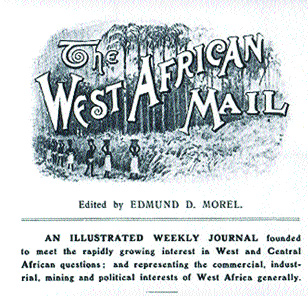
In 1903 she discreetly supported the launch of the West African Mail, under the editorship of the crusading journalist E. D. Morel.
Her proximity to the inner circle of government, her gender, her Protestant background and her knowledge of the politics of history have all contributed towards her occlusion. Green’s correspondence remains dormant in the archives of many of the most engaged figures of her day. Her eventual retrieval will reveal not just one of the most exceptional Irish women in an age of exceptional Irish women, but an exceptional woman in any age.
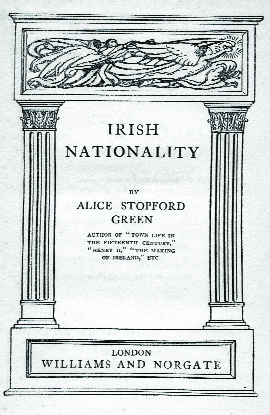
In 1911 Green published Irish nationality, a short and more accessible version of Irish history intended for mass circulation among ordinary Irish women and men.
Her work for the African Society has caused analogous discomfitures and amnesic tendencies. After her death in 1929, the Journal of the African Society published a mean-spirited obituary, hardly recognising her contribution. Within a decade the society was rebranded the Royal African Society, and in 1944 the journal was renamed African Affairs. In its centenary commemorative issue of 2000 there was no comment on the fact that the patron of an organisation founded by a committed Irish nationalist—and one sympathetic to civic republican ideals—was Her Majesty the Queen. Among the honorary vice-presidents were various leading African intellectuals, writers and historians, namely Stuart Hall, Ali Mazrui, Doris Lessing, Chinua Achebe, J. F. Ade Ajayi and Basil Davidson. Green received a few curt references in a short editorial article outlining the shifts in the fortunes of ‘the oldest continuously published journal in the world which is devoted to the study of African affairs’.
In a unique way the journal mirrors the West’s changing relations with Africa and maps the modern emergence of African studies. Early issues capture the transformation in colonial attitudes, imperial pieties and commercial activities. Between the wars, nascent national sentiments gradually merge with liberal sympathies supportive of the process of decolonisation. Since the 1970s a more academic interest in development issues and non-governmental organisation has prevailed. Green’s original inclination to promote and circulate knowledge and inspire new representations of Africa still drives both the society and the journal. Until recently, successive editors maintained a multidisciplinary approach and gave voice and space to disparate and often conflicting perspectives and interests. Articles appealing to scientists, engineers, ethnobotanists or tropical medics were placed among more orthodox research topics such as history, archaeology and anthropology. African modernity, in all its multi-faceted political and cultural contradictions, was brought into focus through the lens of Green’s original foresight for the organising of African information.
Angus Mitchell lectures in history at the University of Limerick.
Further reading:
J.D. Fage, ‘When the African Society was founded, who were the Africanists?’, African Affairs 94 (1995), 369–81.
R.B. McDowell, Alice Stopford Green: a passionate historian (Dublin, 1965).
L. Ó Broin, Protestant nationalists in revolutionary Ireland: the Stopford connection (Dublin, 1985).
















